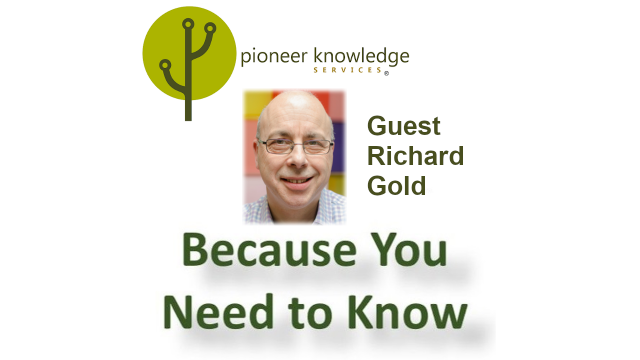
Workplace friendship and knowledge hiding
This article is part of a series on knowledge withholding, hiding, and hoarding.
In addition to seeing knowledge as something positive to be beneficially managed, organisations are increasingly recognizing that they need to consider knowledge risks1.
One of these knowledge risks is knowledge hiding, which has been defined2 as the intentional concealment of knowledge requested by another individual. Both knowledge hiding and knowledge hoarding are opposites of knowledge sharing. However, knowledge hoarding is not an act of deliberate concealment, rather, it is the accumulation of knowledge that may or may not be shared at a later date.
The body of research on the topic of knowledge hiding continues to grow, but this area of research is still very much in its infancy. This means that, for the time being, we need to consider research that is lower down in the levels of evidence pyramid3 than the systematic reviews that we prefer to use as reference sources for RealKM Magazine articles. The levels of evidence pyramid has been developed in the context of the field of medicine, and also been adapted to other fields4.
One example worthy of consideration is a newly published study5 that explores the relationship between workplace friendship and knowledge hiding. The study, authored by Shuai Wang from the University of International Business and Economics, involved an analysis of survey data from 455 MBA (Master of Business Administration) graduates working in a number of organizations in China.
The value of exploring the relationship between workplace friendship and knowledge hiding is supported by:
- a narrative review6 of 35 research articles on knowledge hiding published between 2008 and 2018, the findings of which included that employees getting to know each other may reduce knowledge hiding
- a bibliometric review7 of 103 papers specifically discussing knowledge hiding and/or knowledge withholding in organisations, the findings of which included that there is a need for organizational investigations in regard to the influence of team dynamics and organizational relationships on knowledge hiding.
Psychological safety and task interdependence
Wang defines workplace friendship as “a non-exclusive workplace relationship characterized by mutual trust, commitment, reciprocal interests, and shared interests or values.”
The survey data analysis revealed that maintaining such workplace friendships had the beneficial effect of facilitating psychological safety. In turn, this psychological safety reduced knowledge hiding behavior. Psychological safety describes the situation where employees can express themselves comfortably and freely at work without worrying about negative effects on their self-image, status, and career. Feelings of trust, support, and mutual understanding are conducive to enhancing individual psychological safety.
Additionally, this beneficial impact was found to be further strengthened by task interdependence. Task interdependence describes the extent to which team members need to interact and rely on each other to accomplish tasks effectively. Employees working in situations of high task interdependence have to frequently interact and communicate with their colleagues to coordinate and complete work tasks.
In response to these findings, Wang recommends that managers promote the building and maintenance of friendships between employees to help reduce knowledge hiding behavior. Because of the added benefits of task interdependence, Wang also recommends that managers strengthen the interdependence of team tasks and enhance the visibility of tasks among team members.
However, Wang cautions that while workplace friendship has been found to reduce knowledge hiding behavior, there is a potential risk that is yet to be investigated. This risk is that workplace friendship may increase interpersonal cliques, in which employees’ identification with a clique may trigger knowledge hiding from others outside the clique, or cause employees outside the clique to hide knowledge from those inside the clique. Research is needed in this regard.
Wang also alerts to the limitations of the study. These include the self-reporting nature of the survey, which can introduce biases, and selected demographics, such as surveying MBA graduates in only one country. In response, Wang recommends further investigations with a greater diversity of respondents and in a wider range of contexts.
Header image source: Brooke Cagle on Unsplash.
References:
- Durst, S., & Zieba, M. (2018). Mapping knowledge risks: towards a better understanding of knowledge management. Knowledge Management Research & Practice, 1-13. ↩
- Bilginoğlu, E. (2019). Knowledge hoarding: A literature review. Management Science Letters, 9(1), 61-72. ↩
- Brown Epstein, H. A. (2012). Let’s climb an evidence pyramid. Journal of Hospital Librarianship, 12(3), 218-228. ↩
- John, K. S., & McNeal, K. S. (2017). The strength of evidence pyramid: One approach for characterizing the strength of evidence of geoscience education research (GER) community claims. Journal of Geoscience Education, 65(4), 363-372. ↩
- Wang, S. (2022). Workplace Friendship and Knowledge Hiding: A Moderated Mediation Model of Psychological Safety and Task Interdependence. Forest Chemicals Review, 1341-1356. ↩
- Ruparel, N., & Choubisa, R. (2020). Knowledge hiding in organizations: A retrospective narrative review and the way forward. Dynamic Relationships Management Journal, 9(1), 5‐22. ↩
- Bernatović, I., Slavec Gomezel, A., & Černe, M. (2021). Mapping the knowledge-hiding field and its future prospects: a bibliometric co-citation, co-word, and coupling analysis. Knowledge Management Research & Practice, 1-16. ↩
Also published on Medium.






